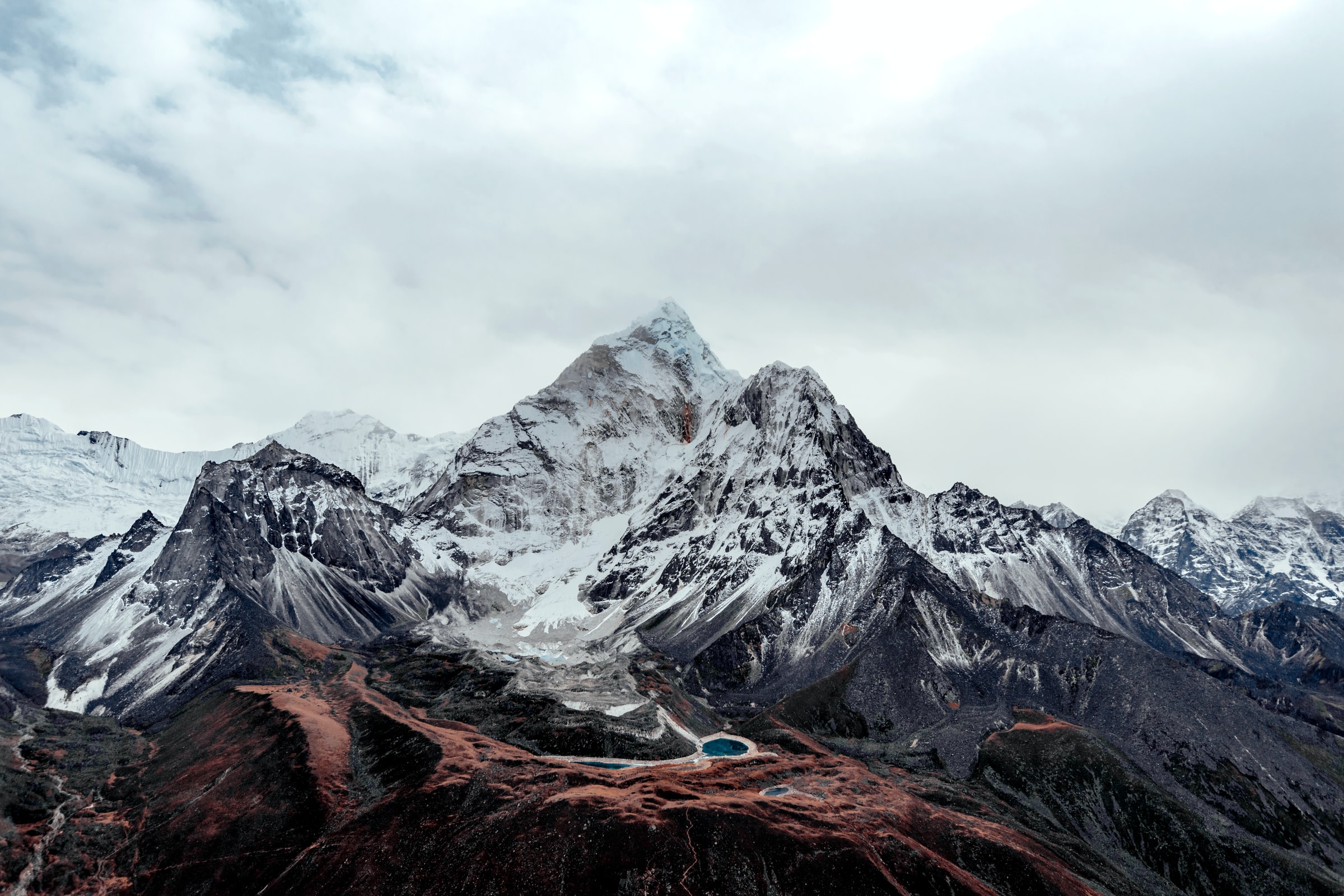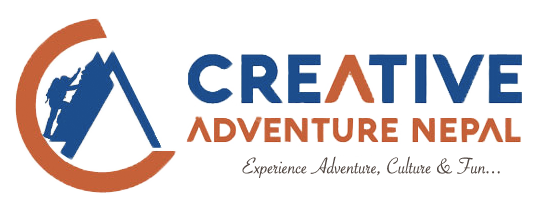
The most common approach to Mount Ama Dablam is through its South-West ridge. It is where most mountaineering newbies begin their ascents. Ama Dablam is a 6812 m snowcapped summit in the Everest area. This South-West ridge is the most common path up Mt. Ama Dablam.
This peak is known for its technical and challenging climb. The mountaineers must navigate dangerous ice rocks and steep snow along the way. Mountaineers usually have to set up three high camps on Mount Ama Dablam (6812m)
Climbers must cross via the roughest and most challenging saddle ridges to reach the first camp from base camp.
Then, head north, going up through the rocky terrain and around the boulder.
From Camp 1, traverse the rocky basin and ascend the hill using the fixed lines to Camp 2. After traveling over rugged rocks and a ridge, you will arrive at Camp 2. The road from Camp 2 primarily comprises steep mixed passageways of rock, ice, and snow. The route goes to the slope, rises to snow ground, and then travels through steep snow and ice tunnels to Camp 3. It is a challenging climb on snow and ice to the right of a giant hanging glacier from here to the summit.
Program ( 30 Days )
Starting your expedition to Mt. Amadablam, our team will pick you up from the airport and help you check in one of our hotels. You can use this day to relax and recharge.
The day begins with a yummy breakfast at the hotel in Kathmandu. You can stroll around the local market and explore some UNESCO world heritage sites. If you want a local guide then we can help you arrange one to go around Kathmandu.
Before every expedition, we help you prepare by hosting a briefing that takes place at the Ministry of Tourism. The Mt. Ama Dablam expedition is quite difficult so preparing for the trek is important.
We take a flight to Lukla airport (one of the most dangerous airports in the world) and begin our trek to Phakding. The trek to Phakding will take you on one of the most beautiful journeys consisting of rocky terrains and breathtaking landscapes. Also, the day ends with a night stay at one of the lodges or a camp.
Starting the day with fresh air and a nutritious breakfast, we begin our journey towards Namche Bazaar. Namche Bazaar sits on an elevation of 3440m and it is one of the main hubs for locals in that region. We will be ending the day with either camping or an overnight stay at the lodge.
In order for your body to get used to the climate and the altitude, we have allotted an acclimatization day for you. You can use this day to rest for your expedition and roam around the cafes and restaurants. We will be staying overnight at a lodge or a campsite.
We will begin our trek from Namche towards Thyangboche monastery which sits on an elevation of 3867m. Tengboche is situated on a hill at the intersection of the Dudh Koshi and Imja Khola rivers, with Mt. Ama Dablam, providing a stunning backdrop. Tengboche Monastery is a UNESCO World Heritage Site that is surrounded by a Himalayan landscape and offers spectacular views of nearby summits such as Everest, Nuptse, Lhotse, Ama Dablam, and Thamserku. Overnight stay at a camp or a lodge.
The day begins with a healthy and energizing breakfast in preparation for the trek to Ama Dablam base camp. The Ama Dablam Base Camp is located at 4,600 meters (15,100 feet), which is one of the reasons for the lengthy approach and acclimatization trek through the Khumbu Valley and along the Dudh Kosi River. Overnight stay at the camp
Advanced Base Camp (4750m) to Camp 1 (5700m)
The view from the base camp is breathtaking: a stream flows through the grasslands, the Ama Dablam peak towers above, and Mount Taweche valley opens below. From here, the path winds east through grassy ridges or glaciers until it reaches a broad point at 5150m, from which we can see the Mingbo La pass. The trail ascends steeply from the mountain range to a large boulder field.
Camp 1 (5700m) to Camp 2 (5900m)
The trail goes from Camp I to a bare rocky mountain range studded with towering rock fingers. At times, the hill is narrow, with more nooks and crannies to navigate on slabs.
The easy ground follows towards the start of a traverse on the east face leading to the base of the Yellow Tower. At 5900m, there is a steep 15-meter pitch where fixed ropes are used to reach Camp II. This is the most difficult pitch on the climb. Camp II is highly exposed, with minimal tent space.
Camp 2 (5900m) to Camp 3 (6300m)
After Camp II, the route blends with snow and iced-up rock. The trail follows a snowy ridge before bypassing a red rock formation and crossing a gorge between the Grey Tower and the lower rock wall. Before reaching the popular Mushroom Ridge 6300m, a sheltered spot on the east side of the ridge, the trail follows through steep snowy sections of this bottomless snowy gorge.
Mt. Ama Dablam Summit Day
The snowy conditions and altitude are the most difficult challenges of Summit Day. The snow and ice trail ascends to the east side of Ama Dablam. Furthermore, you will bypass the hanging glacier until you reach a small snowfield. The climb turns directly up the slopes to the prominent ice crest. Ice fields lead up to a highly exposed area, which is met by a 40–60 degree snow rib and the magnificent summit. Spectacular views of Everest, Nuptse, Baruntse, Pumori, Lhotse Shar, Makalu, and Cho Oyu await.
After your successful summit at Mt. Ama Dablam, we begin the descent from Mt. Ama Dablam base camp towards Namche Bazaar. Overnight stay or camp at Namche
The descent from Namche to Phakding continues to this day. During your rest stops, make sure you check out the soul relaxing views and fresh air. Overnight stay at camp or lodge
Our final descent towards Lukla makes way from Phakding. The gorgeous landscapes and our expert guides will definitely make it worth your while. Overnight stay at Lukla.
The day to return back to Kathmandu finally arrives. We take a flight from Lukla to Kathmandu. Make sure you bid farewell to the majestic land of the Himalayas before your views transition to the bustling city of Kathmandu. Our Creative Adventure Nepal agents will help you check in one of our hotels and help you accommodate in a comfortable way.
This is a rest day for you to either relax at the hotel or explore the wonderful streets of Kathmandu. If you want to visit a particular heritage site and learn about the history behind 300 years old architectural landmarks then this is the perfect day for you. Also, we can help you with a guide to go around the top places in Kathmandu. Overnight stay in Kathmandu’s hotel.
Finally! We are at the end of our tour. A Creative Adventure Nepal representative will drop you off at the airport. Make sure you buy some souvenirs to reminisce about your expedition.
Cost Include
- 5 Nights accomodation in Kathmandu with bed & Breakfast (3 star ).
- Permit fee of Ama Dablam 6812m. Expedition
- Ama Dablam Permit
- Food for Trekking and expedition period
- Expedition crew: Base camp Guide, Cook, Cook helper
- Porters or Yak porter Lukla to Base camp & Base camp to Lukla
- Kathmandu -Lukla - Kathmandu flights with Cargo 50 KG per member
- Equipment allowance, daily allowance for Liaison officer, expedition crew
insurance for Nepalese expedition crew. - 1 tent for 1 person for Expedition
- Mat, dining tent, Toilet tent, Mess tent, Store tent, Table and chairs trekking for the expedition
- Local transportation in Kathmandu (Airport-hotel-airport)
- Emergency Oxygen, Mask and regulator
Cost Exclude
- PERSONAL equipment for climbing & trekking
- Personal & medical Insurance of expedition
- Climbing food, Gas & stove above Base camp
- Lunch & dinner in Kathmandu
- Emergency Rescue evacuation by helicopter incase needed
- Walkie Talkie permit & personal satellite phone permit
- Oxygen & Mask -regulator
- Personal expenses
- Bar Bills & beverage
- Garbage Deposit USD 2000.00 (Sharing of the total person) and Deposit fee will be not refunded if the clients (climber) don't take back their garbage to Namche Bazaar & Kathmandu.

